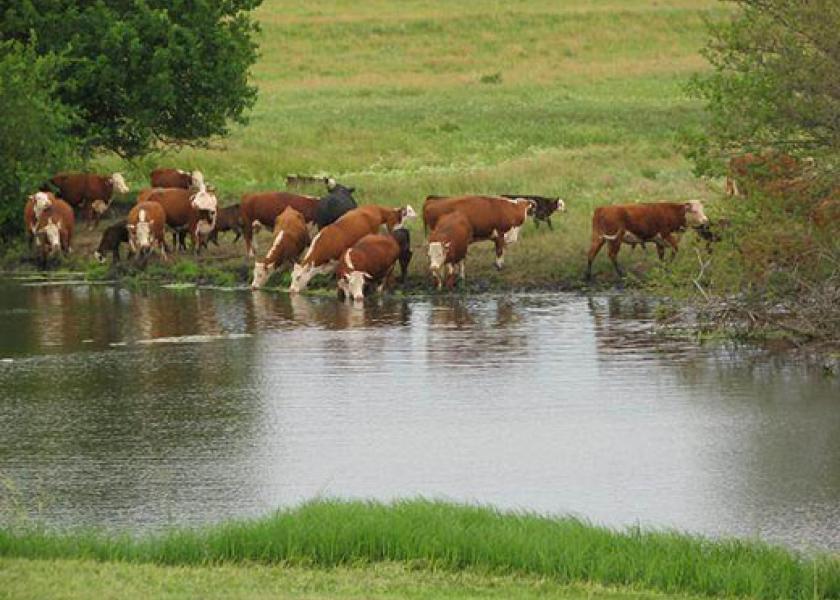Heat Stress in Cattle

According to the Oklahoma Mesonet, the month of July was cooler than normal with the average temperature below 80° Fahrenheit (F) (www.mesonet.org). August has started much the same way with temperatures well below what would be expected during this time of the year. However, this will probably change quickly. With hot temperatures likely to return, cattle producers will need to monitor their cattle for signs of heat stress.
Cattle are comfortable when the temperature is between 15-85°F. When temperatures are above 85°F, cows will typically try to find relief by heading to shade among the trees and/or by bellying deep in ponds. These actions are signs for producers that they should closely observe their cattle for heat stress.
Other signs telling of heat stress include increased respiration, open mouth breathing, breathing with protruding tongue, and excessive salivation. Cattle displaying these signs need immediate relief from the heat.
A good way to provide quick relief is to spray or mist cattle with water. Increasing air circulation will also help to reduce extreme heat. This can be done with large fans or by moving cattle to areas where there is natural wind. If the heat stress continues, cattle with the above signs will begin to tremble and convulse. Without proper treatment, these cattle are at risk of dying.
A lack of clinical signs of heat stress does not mean that cattle are not being impacted by the heat. There are hidden consequences to heat stress such as decreased conception rates in cows, decreased sperm quality in bulls, and reduced weight gain in younger cattle. Due to the hidden impacts of heat stress, it is important that producers have preventative measures in place before hot weather arrives.
Managing heat stress should begin with making sure cattle have plenty of clean water. During hot weather, cattle may drink up to two gallons of water a day per 100 pounds of body weight. Keeping water clean and cool encourages consumption. This may require producers to clean water tanks frequently and to place water tanks in the shade to keep water cool.
There are several other preventative measures that can be taken to aid in helping cattle lower body temperature. Providing access to shaded areas will lower the overall environmental temperature. Making sure that cows have room to spread out will help by providing better air circulation.
Keeping brush low in pastures will also improve air circulation. Feeding a few hours after the high daytime temperatures allow cattle to dissipate heat better since cattle create heat when fermenting their food. Controlling flies will help. Flies force cattle to bunch up. Cattle not fighting flies will maintain better separation which allows for better airflow. Lastly, when working cattle, producers need to start early in the day and be finished before 10 AM.
A great source for managing heat stress in cattle is the Oklahoma Mesonet website (www.mesonet.org). This website is the home of the Cattle Comfort Advisor which is a great tool to manage heat stress in cattle. The site provides detailed information about heat and cold stress for cattle producers. For more information about heat stress in cattle, producers should visit with their local veterinarian and/or their Oklahoma State University Cooperative County Extension Ag Educator.







